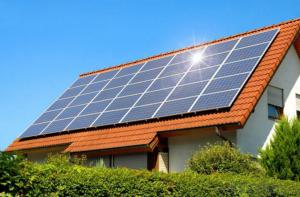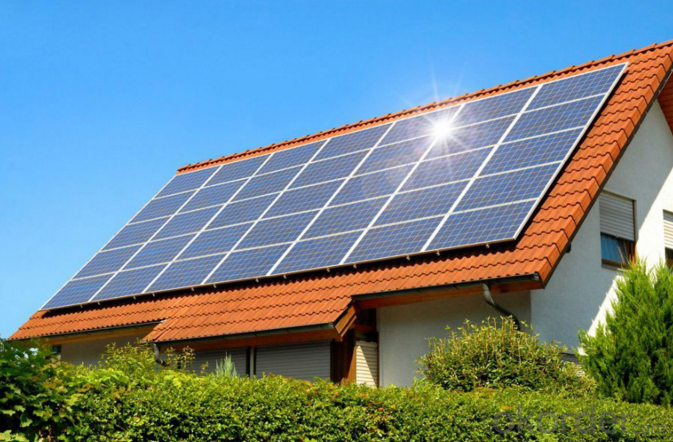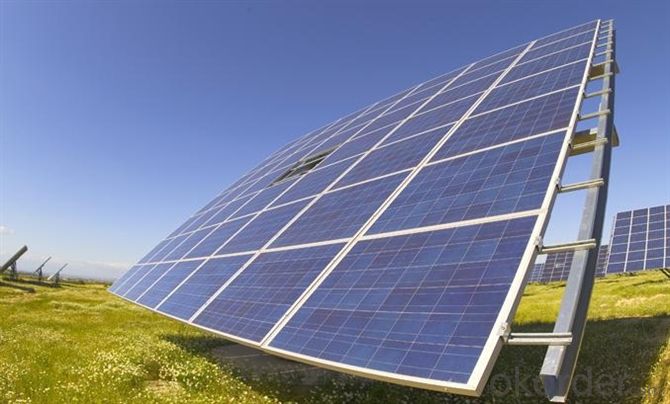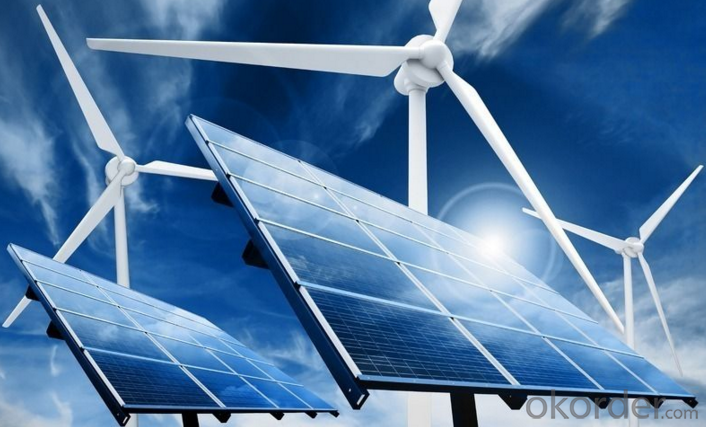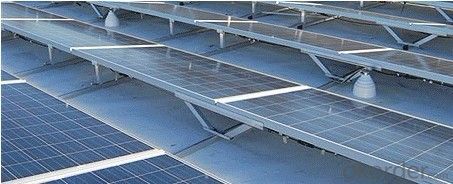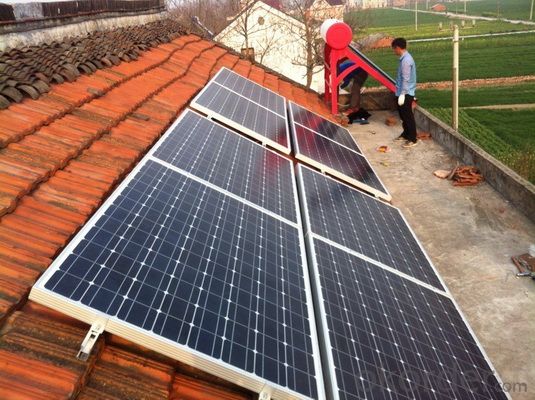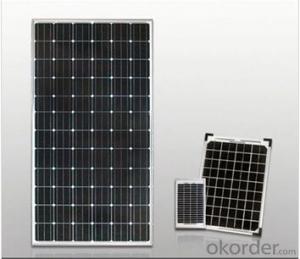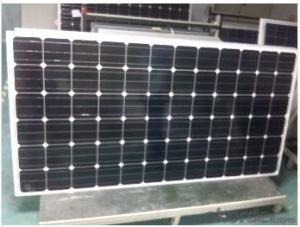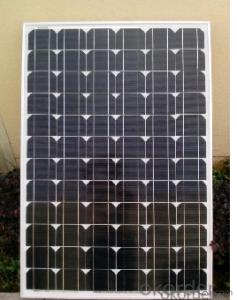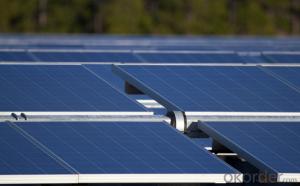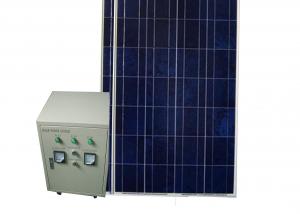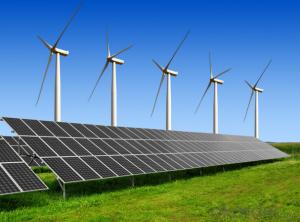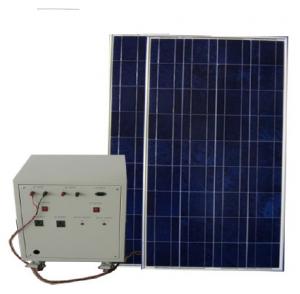Rockford Solar Panels CNBM-K7 Series 3000W Solar Home System
- Loading Port:
- Shanghai
- Payment Terms:
- TT OR LC
- Min Order Qty:
- 1000 watt
- Supply Capability:
- 100000000 watt/month
OKorder Service Pledge
OKorder Financial Service
You Might Also Like
Specification
1.Description of the Solar Panel
Solar Home System CNBM-K7 Series 3000W Solar Panel
CNBM Solar's photovoltaic module is designed for designed for large electrical power requirement. It is the optimal choice for both on-grid and off-grid power systems. CNBM Solar offers high performance of power per square foot of solar array.
2.Characteristics of the Solar Panel
Inverter
Inverter | Rated load power | 3000W |
| Outout wave | Pure sine wave | |
| Input voltage | DC 48V | |
| Output voltage | AC 220V | |
| Output frequency | 50HZ/60HZ | |
| Precision of output frequency | ±6% | |
| Solar panel | Pmax | 245W*12PCS |
| Vmp | 31.1V*2 | |
| Imp | 7.89A*6 | |
| Charger | Charger voltage & current | 48V/30A*3PCS |
| Battery | Capacity | 12V135AH*4*3PCS |
| Support | aluminum | 2PCS/SET*6 |
| Power box | Spary paint iron box, with input, output, ammeter, volmeter, master switch and so on. | |
| Electrical loads in Winter (For Consult) | Electrical loads in Summer (For Consult) | ||||||||
| Name of Load | Power(W) | Quantity | Working Time per Day(H) | Working Days | Name of Load | Power(W) | Quantity | Working Time per Day(H) | Working Days |
| Color TV | 100W | 1 | 5 | 3 days | Color TV | 100W | 1 | 7 | 1.5 days |
| Fridge | 140W | 1 | 8 | 3 days | Fridge | 140W | 1 | 8 | 1.5 days |
| lamp | 11W | 4 | 5 | 3 days | lamp | 11W | 4 | 6 | 1.5 days |
| Computer | 150w | 1 | 4 | 3 days | Computer | 150W | 2 | 6 | 1.5 days |
| Heater | 1000W | 1 | 1.5 | 3 days | Air-conditioner | 1500W | 1 | 3 | 1.5 days |
3.Package Data of the solar Panel
| Part | Size(L*W*Hmm) | Weight(kg) | 20'(pcs) | 40'(pcs) |
| Power box | 800*540*780 | 70 |
20Sets |
26Sets |
| Solar panel | 1655*992*40 | 280 | ||
| Battery | 1100*520*650 | 600 |
4.Applications of the Solar Panel
1.Small power supply
2.transportation
3.Family power of lamps and lanterns
5.IMages of the Solar Panel
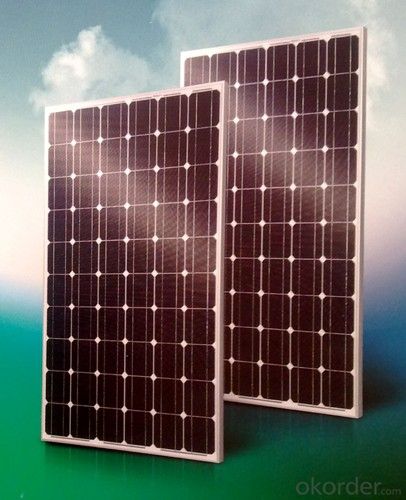
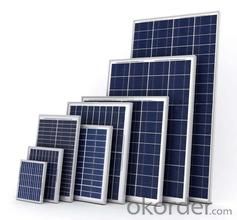
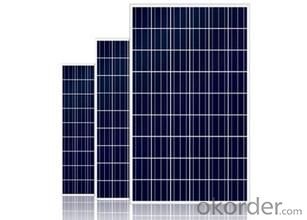
FAQ
1. Q: Do you have your own factory?
A: Yes, we have. Our factory located in Jiangyin city, jiangsu province.
2. Q: How can I visit your factory?
A: Before you take off from your country, please let us know. We will show you the way,or arrange time to pick you up if possible.
3. Q: Do you provide free sample?
A: Usually we do not offer free sample
4. Q: Could you print our company LOGO on the nameplate and package?
A: Yes, we can do that.
- Q: ) what is absolutely needed to hook up a solar panel to grid tie, what permits and/or inspectors are needed?2) if we know how many KWH's we use per month, do we just divide by number of hours per month to find out average KW usage?3) what is an estimated ratio of DC to AC transformation/convertion @ 30 C?4) do the solar panel voltages have to be the same? what would happen if the voltage going into the house is greater/lower than that of the house's defualt voltage5) for added chance of getting 0 pts add some contrators that do business in ohio for installing solar panels or sell them
- The okorder The reference section has all the formulas you are looking for and there is a list of dealers by state, plus various state rebate information. Yes, you can hook up different panels to the same system. There are special controllers that regulate the voltage. I'm more of a hands on nuts and bolts guy so I can't help you with the formulas and engineering explanations. Another great place to get information is Home Power Magazine. You can get the issues online or in print. Thanks for going solar!
- Q: Are there any fire risks associated with solar panels?
- Yes, there are fire risks associated with solar panels, although they are relatively rare. The main risk factors include faulty installation, damaged wiring, and electrical malfunctions. However, adherence to proper installation standards, regular maintenance, and the use of high-quality equipment significantly mitigate these risks.
- Q: Hi there. I live in Colorado, and we obviously get a ton of snow there. I im looking into a solar power system for my home, and I am wondering if the snow will accumulate on the panels, or if, because of the energy passing through, it will melt on contact? By the way we get about 20' of snow each year, and it comes on often. I will also be putting them on my roof. Thanks for your help.
- The energy from the sun is converted to electicity, so there's very little heat produced. I doubt the snow would melt. Try finding a way to scrape it off or have them rotate so you can let the snow fall off.
- Q: This is the cenario. Your yearly energy use comes by mail and it states that the total amount of energy used your household is 7000kWh.Then you make the decision of switching to get solar panels. The question is what area should your solar panel be given that the average annual length of daylight is 2.0.
- It is not that simple. There are 3 main types of solar cells. Monocrystalline silicon is the most efficient and produces the smallest solar cells, and therefore the smallest panels. Poly-crystalline (or multi-crystalline) silicon produces the next most efficient type of cells and are a popular choice. Amorphous (or thin-film) silicon uses the least amount of silicon and also produces the least efficient solar cells. This means thin film system take up more area than the other two; an important factor to consider in relation to possible future upgrades; i.e. if you'll have enough space left to do so. The North (in the Southern hemisphere) or South (in the Northern hemisphere) facing roof collects the most energy. So this biases the roof area required. Your energy usage can be changed. Hot water (a major energy user) could be better using direct solar heating with peak demand boosting, either from mains or solar. There are other possibilities, either to reduce demand or to provide energy from other sources. Not all sunshine hours are equal. Hours around midday are far more productive than hours later in the day. This must be factored in.
- Q: How do solar panels impact the electrical grid?
- Solar panels can have a positive impact on the electrical grid by generating clean and renewable energy. When connected to the grid, they can contribute to reducing the overall demand for electricity, especially during peak times. However, their intermittent nature and fluctuating output require grid operators to carefully manage the variability to ensure grid stability. Additionally, solar panels can decentralize power generation, leading to a more resilient grid and potentially reducing transmission losses.
- Q: Are solar panels affected by temperature?
- Yes, solar panels are affected by temperature. High temperatures can decrease the efficiency of solar panels, causing them to produce less electricity. However, cold temperatures can actually improve their performance to some extent.
- Q: If you want to instal solar panels...how often do you have to replace them?
- My panels came with a 25 year warranty. I will have to replace the converter ($000) at some point, 2-5 year mark. I should breakeven within 6 years thanks to great rebates in my area. I've heard that they lose some efficiency over time, but I know people who have had panels for over 0 years and if they have drop off some, it isn't noticable.
- Q: I have:4- 5v 200ma solar panels5- 3v ,000ma solar panels- 7amp charge controller- 400watt inverterNow I have all my solar panels linked in series which in theory should give me 35v, 5.8 amps at 203 watts. Is this correct?The main question is, what kind of battery should I get so I can run my miscellaneous electronics off of it?I may not have explained it so well so if you need more information, feel free to ask.
- I okorder and they have deep cycle batteries exclusively made for solar panels. but in theory you should get more than one because it only takes around 4-5 volts to charge the battery and you do not want to have it that high even with a charge controller which i would also recommend getting which is like $50 on OKorder but a charge controller is used so you do not overcharge the batteries and fry them or undercharge the batteries and weaken its life it gets it just perfect. it lets the current go in and when it is charged fully nothing goes in an nothing comes out.... for a inverter the one i was going to get was $70 500 watt inverter but changes it from dc to ac...hope i helped
- Q: Do I just run the wire from the panel into the charge controller and then to the battery AND can I simultaneously draw energy from the battery while it is being charged by the panel?Is it as simple as hooking it up like that?
- I hope you have some instructions. You need safety switches and fuses in the circuit. What voltage/currents are you running? Don't burn the house down or get electrocuted please. DC can be very dangerous.
- Q: What is the proper diode to use on an 5v 500ma solar panel?
- At least a 2 amp diode. rated above the 2 volts that are commonly found on the market. A blocking diode must be able to stop a higher current and voltage than the panel maximum. A diode will work on any voltage and current lower than it rating.
Send your message to us
Rockford Solar Panels CNBM-K7 Series 3000W Solar Home System
- Loading Port:
- Shanghai
- Payment Terms:
- TT OR LC
- Min Order Qty:
- 1000 watt
- Supply Capability:
- 100000000 watt/month
OKorder Service Pledge
OKorder Financial Service
Similar products
Hot products
Hot Searches
Related keywords
